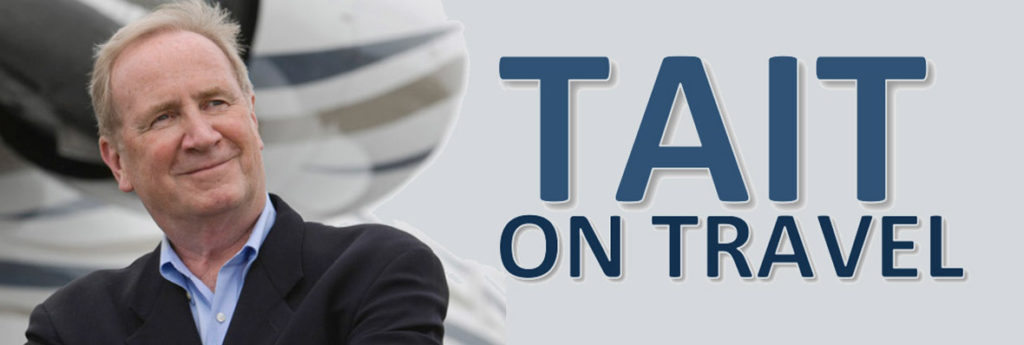I grew up with a mom who, every evening, would shout to my younger brother and me, “Okay boys, it’s pjay time” which was her way of saying “Into your pajamas – it’s bedtime.”
Well, looking at all the many crystal ball visions of how the airline industry might drag itself up by the bootstraps as, if and when flyers reconcile themselves with the ‘new normal’, pjays could very well play a significant role. No, I’m not suggesting that people will have to get to the airport so far in advance for early morning departures that they should come to the airport in their ‘pjays’ – although it is a distinct possibility – but I am talking about quite different PJ’s, as in Private Jets.
General Aviation (GA) aka the private jet industry, in all its evolving jet-card, public charter and fractional ownership variants, has been abuzz of late about the amount of newfound interest in the sector by individuals and corporations alike.
For example, according to its president Anthony Tivnan, Massachusetts-based Magellan Jets has seen a staggering 89 percent increase in new customer enquiries in the last six weeks: And this is coming off the back of a very strong 2019, when the company saw year-on-year revenue growth of 34 percent. Others like VistaJet which focuses on long haul, international private flights, reports that refueling stops in Anchorage, a major stop for Asia-bound trips, are up a staggering 250 percent since the coronavirus outbreak. Sentient Jet meanwhile reports that at least half of the 5,000 jet card flight hours it has sold since the COVID lockdown began, has been to neophyte private flyers.
In Toronto, Kareen Francis, Manager National Charter Sales and Biz. Dev. at Skyservice reported a 25 to 30 percent uptick in requests for quotes from first time private flyers, “some as far out as Christmas” but lamented that, “the US border still being closed for other than essential travel, is a serious impediment to our sales.” She added that passengers have to fill out a health assessment questionnaire at time of booking and, prior to boarding, their customers are given a personal COVID Kit with a mask (branded I trust), gloves, hand sanitizer and tissues.
In Winnipeg, Fast Air, Manager Marketing and Biz. Dev. Dan Rutherford told a similar tale, with mostly east-west flying but an encouraging number of newcomers asking for quotes. He added that, “Clearly a lot of it is driven by risk mitigation on business travel. They aren’t keen to be crammed in with hundreds of strangers any more.”
But it’s not just about first-timers trading up: Doug Gollan, editor of ‘Private Jet Card Comparisons’ commented that, “There is a huge group of people who have the wealth to fly private that had simply never bought into the pitch about business efficiency” adding that this group is now thinking less about the cost of flying privately and more about the health risks of flying commercially.
Anyone in the business of selling charter to someone who’s never flown privately before, will tell you that the biggest challenge is getting them over the hump of thinking private flight is strictly a rich man’s sport and only comparing the price of a commercial ticket to the price of a whole plane charter when broken out by the seat. If however one takes a more holistic view of the cost, time and productivity efficiencies and considers what can be achieved in a same-day trip by charter that when flying commercial would soak up many hours of unproductive time and involve hotel nights, restaurant tabs etc. then the total cost comparison is usually a lot less odious.
It’s really all about placing a value on an employee’s time – and nowadays also a whole bunch of health considerations. With longer than ever check-in times, CATSA lines, long walks to gates, shoulder-to-shoulder seating, taxiway delays and all the other joys of commercial flight, virtually walking right on board at an FBO and departing to your own schedule is pretty appealing. One of the biggest benefits of the private experience is the “de-airporting” of the commercial big hub nightmare when using smaller, usually more convenient airports and FBOs. This also plays into the social distancing (or lack thereof) and general health risks associated with mass transportation.
From all the feedback it looks like (to use a baseball term) “the shift is on” but for the private sector to secure a stronger, more permanent and prominent foothold with a wider group of business travellers, the General Aviation fraternity needs to start recruiting more support from OTAs and corporate travel managers. There’s no reason why an OTA shouldn’t be saying to a client, “Or for a trip like this, charter might be the best solution – shall we take a look?” Of course, for this to happen GA has got to set about improving its messaging and distribution networks. But, heh let’s face it, if long time hold-out Southwest can suddenly break with tradition and embrace GDS, then there’s no reason why general aviation cannot follow suit.
Kanye West – whose own private jet is nothing less than a Boeing 747 – likes to rap, “Sorry I’m in pajamas but I just got off the PJ.” Could this soon become an anthem for a whole new group of GA pjay groupies.?

